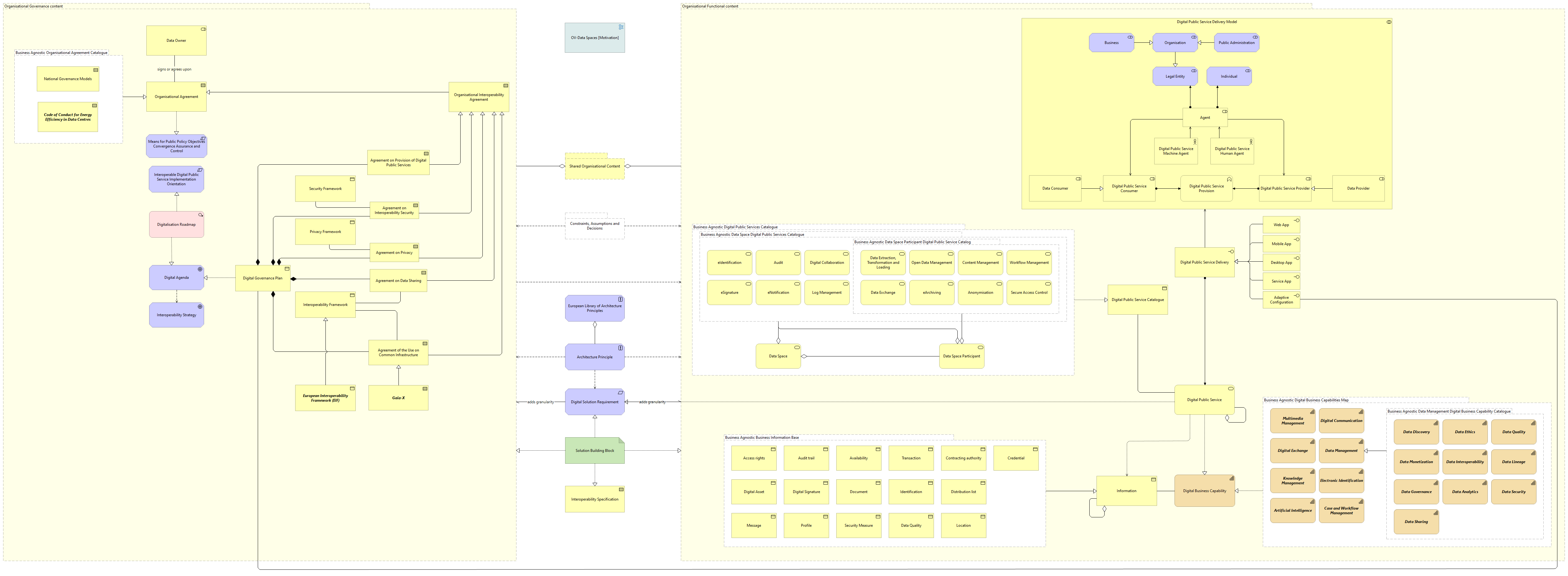
The Organisational view models the most salient Architecture Building Blocks and Solution Building blocks that shall be considered in order to support organisational interoperability among providers and users of a public service.
Narrative: The delivery of public services involves various organizations playing different roles within the ecosystem. Public service providers, acting as suppliers, offer public services to citizens, businesses, and public administrations, who act as consumers of these services. The specific public services are documented in public service catalogues, which serve as a reference for service portfolio management. Public service providers can delegate the delivery of these services to public service delivery agents who act on their behalf. To ensure effective service delivery, public service providers can enter into interoperability agreements that define the agreed-upon approach to delivering public services to users.
The delivery of public services relies on the utilization of business capabilities and the exchange of business information. Business capabilities represent the operational functions required to deliver the services, while the exchange of business information facilitates the transfer of relevant data between the involved parties. The exchanged business information is specific to each instance and is governed by business rules derived from organizational interoperability enablers such as organizational structures, procedures, policies, and skills.
Interoperability governance is overseen by the interoperability organizational authority, responsible for establishing and enforcing governance practices. This authority influences the interoperability strategy, which in turn implements the interoperability framework. Interoperability skills, a specialized form of organizational skills, enable organizations to excel in interoperability and effectively participate in the ecosystem.
Security also plays a crucial role in the delivery of digital public services. A security framework, which is a specific form of a security policy, addresses the organization's security-related aspects, ensuring the protection of sensitive information and adherence to security standards.
To support the design and implementation of digital public services, additional solution building blocks are extended. These include organizational agreements, a digital governance plan, a digital public service catalogue, information management, and digital business capabilities. These building blocks provide specific functionalities and capabilities to enhance the development and deployment of digital public services, aligning them with the overarching organizational framework.
Overall, the organizational layer of the solution architecture template outlines the roles, agreements, processes, and governance mechanisms necessary for effective delivery of public services. It emphasizes the importance of interoperability, security, and specialized skills, while incorporating additional solution building blocks to enable the design and implementation of digital public services.